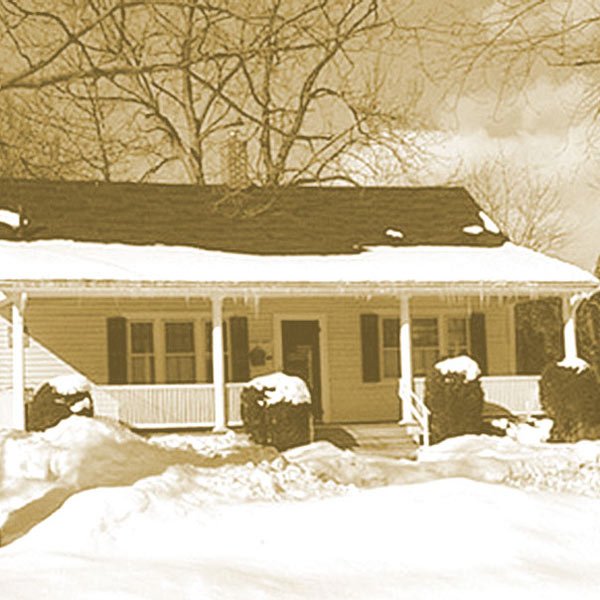The Man
John Chapman, known as Johnny Appleseed, lived by and taught the virtues of Generosity, Humility, Stewardship, Thrift, Entrepreneurship, and Caring for one’s fellow man.
BORN: SEPTEMBER 26, 1774, LEOMINSTER, MASSACHUSETTS
DIED: MARCH 18, 1845, FORT WAYNE, INDIANA
PARENTS: NATHANIEL AND ELIZABETH SIMONS (OR SIMONDS) CHAPMAN
Pre-Revolutionary War New England
In addition to John, Nathaniel and Elizabeth Chapman had two other children: Elizabeth, who was four years older than John, and Nathaniel, who died about a month after being born.
Sadly, the young John Chapman’s mother also died shortly after giving birth to Nathaniel- when John was less than two years old.
During this time, his father was serving in the Revolutionary Army, with Washington in New York, and later at the armory in Springfield, Massachusetts. John and his sister are presumed to have lived with relatives.
After the war, Chapman’s father Nathaniel married Lucy Cooley in 1781. They set up a home in Longmeadow, Massachusetts. where they had 10 children, five boys and five girls. Whether the two surviving children from Nathaniel's first marriage were part of this household is uncertain.
John Chapman Enters Pennsylvania
The next certain evidence of John Chapman's whereabouts is in trading post records from northwestern Pennsylvania in 1797, when John turned 23. The same records show his half-brother Nathaniel (the oldest of Nathaniel and Lucy’s children, who would have been 16 at the time) with him.
Unconfirmed stories place him variously in northeastern Pennsylvania's Wyoming Valley, and in southwestern Pennsylvania's around Bedford and Westmoreland counties, in the same period. It is possible that he made more than one trip west, with or without his half-brother, in the 1790s.
Traveling Further West Into Ohio
In the winter of 1804-05, the entire Chapman family (except for his older sister Elizabeth, who had married) moved to Ohio, settling in the Duck Creek area near Marietta. Most of Chapman’s adult life was spent in Ohio, setting up nurseries and selling his apple tree saplings to new settlers. Until the mid-1820s, his activities were focused on the region that is now Richland, Ashland, Wayne and Knox counties.
He then moved his activities with the line of advancing settlement toward northwestern Ohio (Hancock, Putnam, Mercer, Auglaize, and Defiance counties), and by 1840 was most active in northeastern Indiana (Jay and Allen counties). By the end of his life he held title, through purchase or long-term leases, to roughly 1200 acres of land in Ohio and Indiana.
Johnny Appleseed
It was while John Chapman was in Ohio that he earned the nickname Johnny Appleseed. In 1845, while tending an orchard in Indiana, Chapman contracted pneumonia and died at the home of friends near Fort Wayne, just six months shy of his 71st birthday – quite an old age for his era, when the average life expectancy was less than 40 years.
John Chapman is buried in Fort Wayne. While the exact location of his grave is still in dispute, the most likely site is on a knoll in Fort Wayne's Johnny Appleseed Park, where a small monument has been erected.
John Chapman – A Complex, Caring Man
Though often portrayed as a sort of wandering hermit, John Chapman made a wide variety of acquaintances, including doctors, the ministers of several denominations (with whom he enjoyed debating theology), as well as many ordinary farmers.
He personally knew John James, of Urbana,a lawyer and banker, who donated the land for Urbana College (later Urbana University), the first Swedenborgian college in America.
Johnny Appleseed knew the Coffinbury brothers, author Salathiel and lawyer Andrew, of Mansfield; educator Milo Williams, who became the first president of Urbana College; and Cincinnati's Adam Hurdus, Swedenborgian minister and the builder of Ohio's first organ.
Chapman was a businessman, a missionary for the Swedenborgian Church, a conservationist, a friend to Native Americans and pioneers, as well as an accomplished storyteller who greatly enjoyed telling stories to children and adults.
He lived simply and was very generous to his fellow man.
When settlers didn’t have money to pay for his apple saplings, Chapman would give them to the settlers, telling them to pay when they could afford to.






